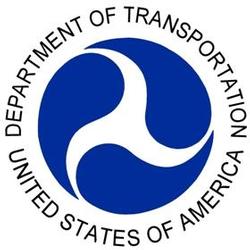
BTS Statistics Release: November 2015 North American Freight Numbers
The value of U.S.-NAFTA freight totaled $88.2 billion in November 2015 as all modes of transportation carried a lower total value of freight than a year earlier, according to the TransBorder Freight Data released today by theU.S. Department of Transportation’s Bureau of Transportation Statistics (BTS). Canada regained its historical rank as top North America trade partner after falling behind Mexico in total trade value for the first time in October. Large decreases in the value of commodities moved by pipeline and vessel in November were due to the reduced unit price of crude oil.
Year-over-year, the value of U.S.-NAFTA freight flows by all modes declined by 8.4 percent.
Freight by Mode
In November 2015 compared to November 2014, the value of commodities moving by truck decreased by 0.4 percent, while the value of air freight decreased by 7.3 percent and rail by 9.8 percent. Vessel freight value decreased 42.6 percent and pipeline freight decreased 43.2 percent mainly due to the lower unit price of crude oil, which comprises a large share of the commodities carried by these modes. Average monthly prices for crude petroleum and refined fuel are available from theU.S. Energy Information Administration.
Trucks carried 66.2 percent of U.S.-NAFTA freight and continue to be the most heavily utilized mode for moving goods to and from both U.S.-NAFTA partners. Trucks accounted for $30.0 billion of the $46.8 billion of imports (64.1 percent) and $28.3 billion of the $41.3 billion of exports (68.5 percent).
Rail remained the second largest mode by value, moving 15.1 percent of all U.S.-NAFTA freight, followed by vessel, 5.4 percent; pipeline, 4.2 percent; and air, 3.8 percent. The surface transportation modes of truck, rail and pipeline carried 85.5 percent of the total U.S.-NAFTA freight flows.
U.S.-Canada Freight
The value of U.S.-Canada freight totaled $45.1 billion in November 2015, down 13.8 percent from November 2014, as all modes of transportation carried a lower value of U.S.-Canada freight than a year earlier.
Lower crude oil prices contributed to a year-over-year decrease in the value of freight moved between the U.S. and Canada. Crude oil is a large share of freight carried by vessel and pipeline, which were down 46.1 percent and 43.5 percent respectively year-over-year.
Trucks carried 60.4 percent of the $45.1 billion of freight to and from Canada, followed by rail, 16.3 percent; pipeline, 7.7 percent; air, 4.6 percent; and vessel, 3.6 percent. The surface transportation modes of truck, rail and pipeline carried 84.4 percent of the total U.S.-Canada freight flows.
U.S.-Mexico Freight
The value of U.S.-Mexico freight totaled $43.0 billion in November 2015, down 1.9 percent from November 2014, as two out of the five transportation modes – air and truck – carried more U.S.-Mexico freight value than in November 2014. Freight carried by truck increased by 4.9 percent, led by shipments of electrical machinery, which were up 10.5 percent. Air freight value rose 2.7 percent while rail freight value declined 4.3 percent. Pipeline freight value decreased by 37.5 percent and vessel freight value decreased by 40.7 percent mainly due to lower crude oil prices.
Trucks carried 72.3 percent of the $43.0 billion of the value of freight transported to and from Mexico, followed by rail, 13.8 percent; vessel, 7.4 percent; air, 2.9 percent; and pipeline, 0.6 percent. The surface transportation modes of truck, rail and pipeline carried 86.7 percent of the total U.S.-Mexico freight flows.
See BTS Transborder Statistics Release for summary tables and additional data. See North American Transborder Freight Data on the BTS website for additional data for surface modes since 1995 and all modes since 2004.









